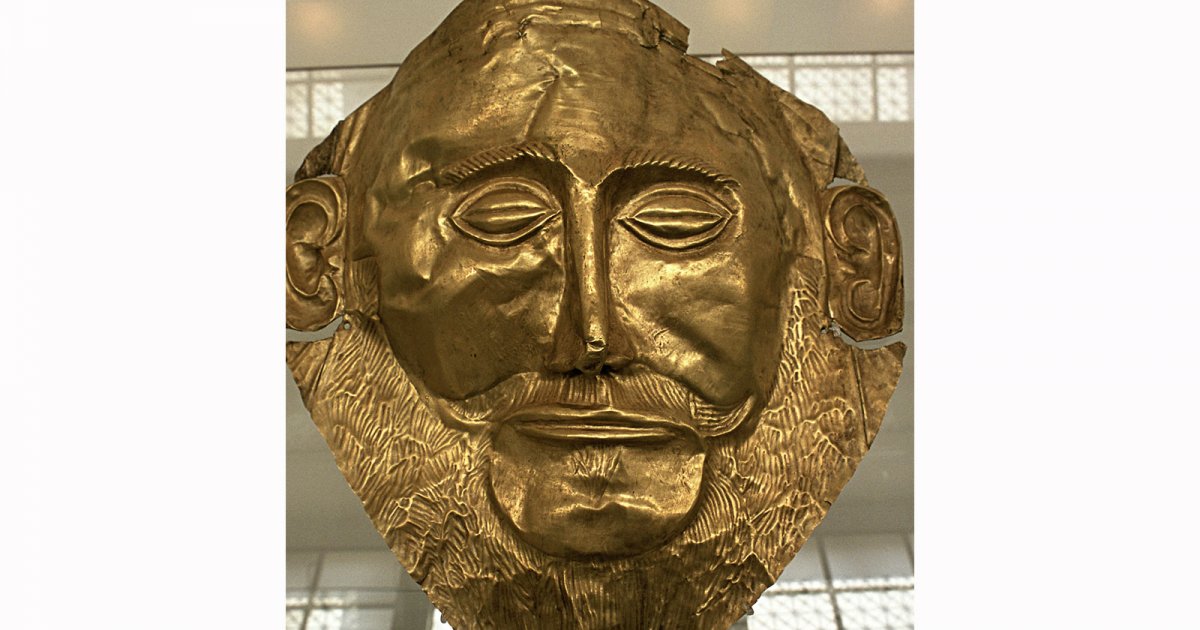ARCHEOLOGICAL MUSEUM, Mask Of Agamemnon Room 04
 Language: English / USA
Language: English / USA
The Mask of Agamemnon is one of the treasures of the museum, and one of its best-loved symbols. Its beauty and the story of how it was discovered are themselves now legendary in Greece.
It was discovered by Heinrich Schliemann, a German with a passionate interest in Homer’s epic poems, the Iliad and the Odyssey, which tell the stories of the best-known gods and heroes of Western culture. Schliemann was obsessed with the idea of finding traces that would confirm that the stories were true.
In 1876, he was working on an archeological site in the Peloponnesian city of Mycenae, a flourishing center between 1700 and 1200 BC. In some of the tombs near the royal palace, he uncovered a real treasure. The faces of some of the deceased were covered with gold masks, while the bodies were covered with fabrics richly decorated with rosettes in gold leaf, surrounded by other splendid objects. He brought to light a total of 14 kilos of objects in gold and many others in ivory and ceramics that were no less spectacular or important.
The most famous of these objects, the Mask of Agamemnon, was tooled from the back. The moustache, beard and eyebrow details enhance the smooth surface, giving the “portrait” an expression of regal severity. Schliemann was so excited by the idea of having found the heroes of the Iliad that he claimed to have discovered the tomb of King Agamemnon, one of the main characters of the work, considered to have lived around 1200 BC. Later studies, however, have shown that the mask is 300 years older.
An interesting fact: Schliemann was an unscrupulous fortune hunter, and part of the huge amount of money he spent on searching for the treasures he dreamed of was obtained illegally. In 1850, he had gone to America to lend money to the miners involved in the famous gold rush; after he had made his money, he was placed on trial for fraud and had to leave the country. According to some studies, some of the pieces he claimed to have found in Troy and Mycenae may have been forged. Even the upward-curling moustache on the Mask of Agamemnon, typical of the German fashion of the 19th century, initially aroused suspicion that the mask might have been created at that time.



